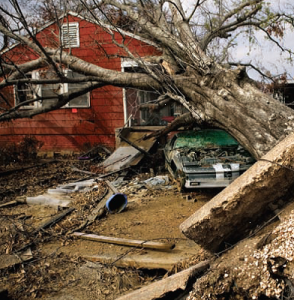September is National Preparedness Month. It is also our annual Prepare Kansas online challenge. Prepare Kansas 2017 will provide tips on getting financially prepared ahead of disasters and emergencies. This year’s program will be conducted through the K-State Research and Extension Facebook page. No registration is required, so Kansans and anyone interested in planning ahead for emergencies can follow on Facebook and this blog at any time during September, pick up handy information and interact with K-State extension specialists and agents. Today’s post is written by Elizabeth Kiss, Family Resource Management Specialist.
Things change. Circumstances change. This week’s challenge is to review your insurance coverage. Why does this matter?
 The purpose of insurance is to cover major losses, such as can occur with storms and other weather-related disasters. It is important to have adequate coverage on your home, vehicles, and possessions so that they can be repaired or replaced if damaged. It is recommended to review your insurance coverage at least annually. Every few years you may want to schedule a face-to-face review with your insurance agent.
The purpose of insurance is to cover major losses, such as can occur with storms and other weather-related disasters. It is important to have adequate coverage on your home, vehicles, and possessions so that they can be repaired or replaced if damaged. It is recommended to review your insurance coverage at least annually. Every few years you may want to schedule a face-to-face review with your insurance agent.
Last week’s challenge was to create, or update, a home inventory. With that information you now have an accurate picture of your home and its contents in the event of damage or loss.
Review your homeowner’s or renter’s insurance to be sure you have adequate coverage and understand the terms of the policy.
- Policy limits. If your home and contents are not coverage for at least 80 percent of its replacement cost, rather than actual cash value, it is likely that the full cost of rebuilding after an insured loss is not covered.
- Coverage. It is important to be clear about what disasters (perils) are covered. For example, not all policies cover damages caused by earth movement, flood, or sewer back-up. Some policies exclude certain types of property.
- Deductibles. Insurance policies typically require that the policy holder pay a specific amount of money before the insurance company will pay a claim. This is the deductible. If possible, set aside emergency funds equal to the amount of the deductible. This can speed up the recovery process.
Review your auto insurance too. Vehicles depreciate and there is no reason to cover the car for more than it is currently worth. Comprehensive coverage pays for damage to your auto resulting from events other than collision such as windstorm, hail, or fire. Collision coverage is limited to damaged caused to your car from a collision.
Want to learn more? Download this fact sheet from the K-State Research and Extension bookstore https://www.bookstore.ksre.k-state.edu/pubs/MF3055.pdf
Another informative resource is this new guide: Disasters and Financial Planning: A Guide for Preparedness and Recovery. The National Endowment for Financial Education® (NEFE®) partnered with the American Red Cross and the American Institute of Certified Public Accountants (AICPA) to produce the guide. Chapter 2, Protecting Your Property, is a good place to start.
